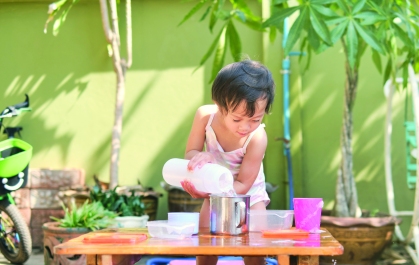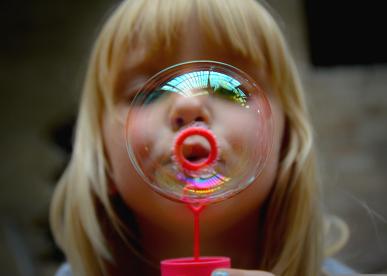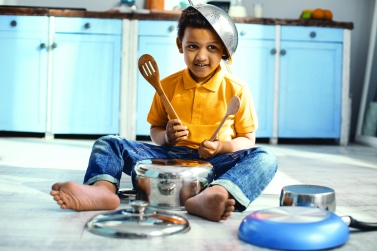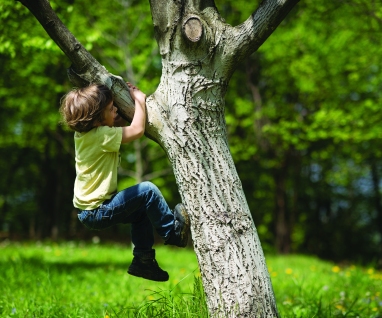 Early childhood educators know that children experience the world using their senses. Because of this, sensory play is very popular in classrooms and childcare centers. A simple Internet search for “sensory play activities” yields millions of results, many of them promising 20 or more ideas for sensory play in a single blog post or article. Summer (like any season) naturally lends itself to sensory experiences—there’s splashing water in a table or pool, hearing the tune of the ice cream truck and tasting sweet treats, smelling fresh cut grass and garden flowers, and seeing lightning bugs. Every environment has its unique scents, textures, tastes, sights, and sounds to appreciate. How can you support meaningful sensory play this summer? Read below to find out more.
Early childhood educators know that children experience the world using their senses. Because of this, sensory play is very popular in classrooms and childcare centers. A simple Internet search for “sensory play activities” yields millions of results, many of them promising 20 or more ideas for sensory play in a single blog post or article. Summer (like any season) naturally lends itself to sensory experiences—there’s splashing water in a table or pool, hearing the tune of the ice cream truck and tasting sweet treats, smelling fresh cut grass and garden flowers, and seeing lightning bugs. Every environment has its unique scents, textures, tastes, sights, and sounds to appreciate. How can you support meaningful sensory play this summer? Read below to find out more.
- Sun, sand, and water say summer like nothing else! Set up sand and water play outside. Offer nesting cups and/or a variety of containers for children to experiment with volume. For water play, add items to sink and float. Offer colanders, slotted spoons, and other perforated items for experimenting. Science concepts such as evaporation can be explored by setting different amounts of water in the sun. Draw attention to bubbles in the water, the sound of sand being scooped, and the warmth of the sun. Make “I wonder” statements (e.g., “I wonder what will happen if. . .”) as children test items.

- Expand sensory play beyond children experimenting with their hands. Offer oral sensory activities such as a snack time that combines varying tastes, textures, and temperatures (e.g., granola with yogurt or pretzels with orange slices). Such an activity activates children’s awareness. Alternatively, blowing bubbles is an oral sensory activity that can be calming.
- Engage children’s sense of smell (olfactory sense) by offering scented markers or adding essential oil or food extract to homemade playdough. In addition to traditional playdough accessories, offer chenille stems, beads, marbles, straws, and nature to experiment with. Read 12 Months of Sensory Dough at Lemon Lime Adventures for more ideas to engage children in unique sensory dough experiences. Additionally, you can enlist the children’s help in growing and caring for fragrant herbs such as lavender, basil, and mint. Invite the children to pick and smell the herbs freely.
 Sensory bins or trays filled with interesting textures or hidden items are popular activities. However, you can use these vessels to offer auditory activities. Fill a bin or tray with items that make different sounds. This could include bells, rainsticks, beanbags, rhythm sticks, and aluminum foil to crinkle. Model how to use each item and invite children to explore. You can also provide different containers on which children can bang or drum. Talk with children about soft and loud sounds and how they use their bodies to help make those sounds.
Sensory bins or trays filled with interesting textures or hidden items are popular activities. However, you can use these vessels to offer auditory activities. Fill a bin or tray with items that make different sounds. This could include bells, rainsticks, beanbags, rhythm sticks, and aluminum foil to crinkle. Model how to use each item and invite children to explore. You can also provide different containers on which children can bang or drum. Talk with children about soft and loud sounds and how they use their bodies to help make those sounds.
- Play games that involve making movements or different faces in front of mirrors and children mirroring each other’s movements. Play with objects on light tables to explore the properties of light and matter. Make sensory bottles. Sensory bottles allow for an endless combination of items to observe and find, and they are great for infants, toddlers, and preschoolers alike. The OT Toolbox offers lists of fillers, loose parts, and learning components to help get you started.
 Take weekly sensory motor scavenger hunts. Instead of keeping a checklist of common items to find, challenge the children to find items of different textures or with different movements. For example, can they find something fuzzy, smooth, or rough? Can they find something to jump over, climb, or crawl over? The Inspired Treehouse, led by pediatric occupational and physical therapists, offers a free sensory motor scavenger hunt printable that you can use again and again.
Take weekly sensory motor scavenger hunts. Instead of keeping a checklist of common items to find, challenge the children to find items of different textures or with different movements. For example, can they find something fuzzy, smooth, or rough? Can they find something to jump over, climb, or crawl over? The Inspired Treehouse, led by pediatric occupational and physical therapists, offers a free sensory motor scavenger hunt printable that you can use again and again.
Sensory play is a way to engage children’s senses and learn about how they process their environments. The importance of this type of play is that there’s no product! Children can experiment to their heart’s content and engage in as much or as little as they want. To learn more about sensory processing and the seven sensory processing systems, visit the following resources:
The Inspired Treehouse
Lemon Lime Adventures
Sensory Processing 101
Back to blog listing